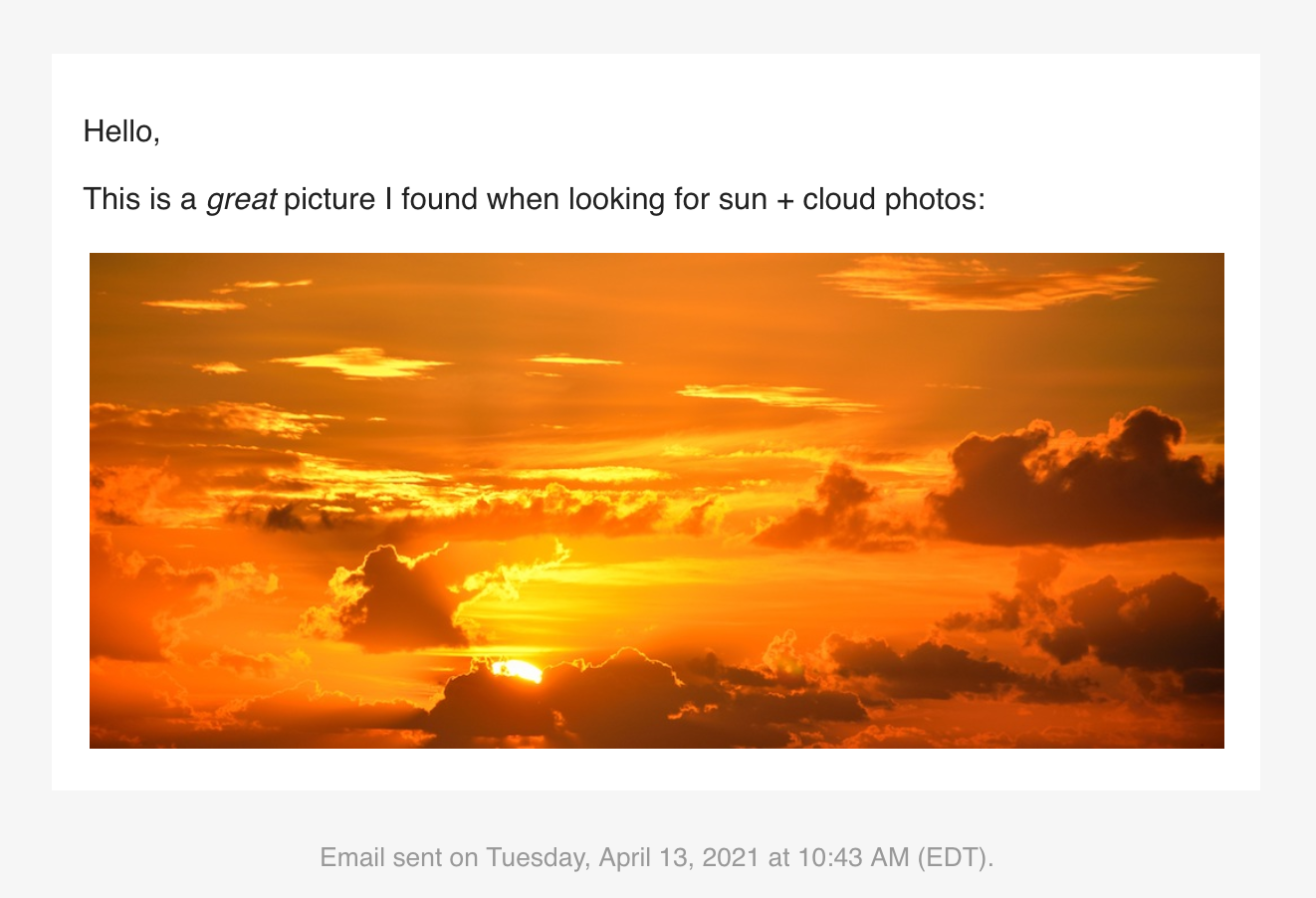

The blastula package makes it easy to produce and send HTML email from R. The message can have three content areas (the body, the header, and the footer) and we can insert Markdown text, block-based components, and even HTML fragments. The underlying HTML/CSS is meant to display properly across a wide range of email clients and webmail services. The resulting email message is responsive so it’ll look great on both large displays and mobile devices.
When you compose an email, you can use objects from the global
workspace and work them into the message content. Let’s create a nicely
formatted date/time string (date_time) with the
add_readable_time() function, and, transform an image on
disk to an HTML string object (img_string).
# Get a nicely formatted date/time string
date_time <- add_readable_time()
# Create an image string using an on-disk
# image file
img_file_path <-
system.file(
"img", "pexels-photo-267151.jpeg",
package = "blastula"
)
img_string <- add_image(file = img_file_path)Now we use the compose_email() function to compose the
email. There are three main arguments here: body,
header, and footer. You can supply
Markdown text to any of these content areas to get
rendered HTML.
In the example code below, the strings that are part of the email
body and the email footer are combined with glue::glue()
and, since we have Markdown and HTML fragments, we need to use the
md() function.
email <-
compose_email(
body = md(glue::glue(
"Hello,
This is a *great* picture I found when looking
for sun + cloud photos:
{img_string}
")),
footer = md(glue::glue("Email sent on {date_time}."))
)After creating the email message, we can look at it to ensure that the formatting is as expected. Simply call the object itself and it will be displayed in the Viewer.
# Preview the email
email
We can store SMTP email credentials in a file using the
create_smtp_creds_file() function. There are also other
ways to set up SMTP access credentials (like using system-wide key-value
store through the create_smtp_creds_key() function).
Having generated a credentials file, we can use the
smtp_send() function (along with the
creds_file() credentials helper function) to send the email
through an SMTP server.
# Sending email by SMTP using a credentials file
email %>%
smtp_send(
to = "jane_doe@example.com",
from = "joe_public@example.net",
subject = "Testing the `smtp_send()` function",
credentials = creds_file("email_creds")
)We can also send email based on R Markdown files
through RStudio Connect. The
prepare_rsc_example_files() function provides .Rmd files
that facilitate a main report + email report workflow. The key
components are the blastula::blastula_email output type for
the email report, and the use of render_connect_email() and
attach_connect_email() in the main report.
The blastula package can be installed from CRAN with
install.packages().
install.packages("blastula")You can install the in-development version of blastula from GitHub using the devtools package.
install.packages("devtools")
devtools::install_github("rstudio/blastula")If you encounter a bug, have usage questions, or want to share ideas to make this package better, feel free to file an issue.
There are two main places to get help:
The RStudio community is a friendly place to ask any questions about rmarkdown and the R Markdown family of packages.
Stack Overflow is a great source of answers to common rmarkdown questions. It is also a great place to get help, once you have created a reproducible example that illustrates your problem.
Please note that the gt project is released with a contributor
code of conduct.
By participating in this project you agree to
abide by its terms.
© Posit Software, PBC.
This project is primarily maintained by Rich Iannone. Other authors may occasionally assist with some of these duties.